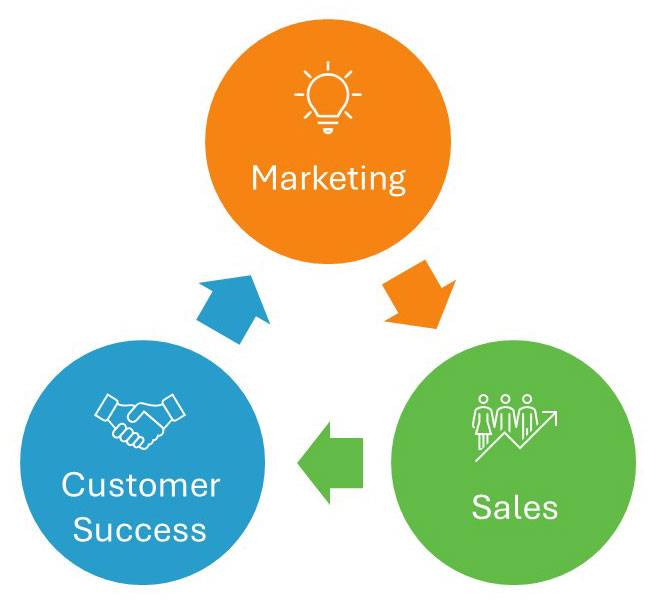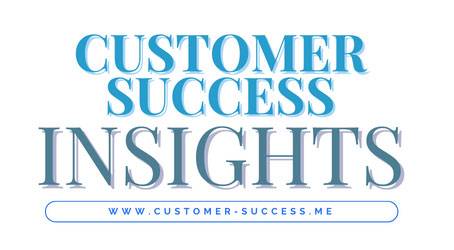Customer Onboarding
Customer Onboarding: The Key to Long-term Success
By: Zainab Zanaty
Customer onboarding is a critical process that can make or break a company’s relationship with its customers. It is the series of steps that customers go through to become fully acquainted with a product or service, ensuring they understand its value and know how to use it effectively. The onboarding process starts much earlier than many people realize, beginning with the initial interactions customers have with marketing efforts. From there, it flows through the sales phase and into the customer success (CS) stage, creating a seamless journey that aims to meet customer needs and expectations at every touchpoint.
The significance of customer onboarding cannot be overstated. In today’s highly competitive market, where customers have numerous options at their fingertips, the onboarding experience can be a decisive factor in whether they stay with a product or move on to a competitor. A well-executed onboarding process not only helps in retaining customers but also enhances their overall experience, leading to increased satisfaction, loyalty, and advocacy. Conversely, a poorly managed onboarding process can lead to frustration, confusion, and ultimately, higher churn rates.
This article will delve into the customer onboarding process, exploring how it starts from the very first interaction with potential customers and continues through their journey to becoming satisfied and loyal users. We will examine the roles of marketing, sales, and customer success in this process, highlighting the importance of each stage. Additionally, we will discuss the positive and negative impacts of onboarding on both customers and companies, providing a balanced view of its significance. Finally, we will offer best practices for creating an effective onboarding process that ensures customers not only stay but thrive with your product or service.
Table of Contents
The Onboarding Process: From Marketing to Customer Success
In this section, we will explore the three main stages of the customer onboarding process: marketing, sales, and customer success. Each stage plays a vital role in guiding potential customers from their initial interest to becoming loyal advocates of the product or service. We’ll delve into the specific strategies employed at each stage, and the importance of seamless transition between them for a successful customer onboarding experience.

Marketing: Setting the Stage
The onboarding process starts with marketing, which plays a pivotal role in capturing the interest of potential customers. At this stage, the primary objective is to provide detailed information and present tailored solutions that address the specific challenges faced by potential customers in their respective industries. Effective marketing involves understanding the target audience’s needs and pain points, then crafting messages that resonate with them. This involves creating informative content, such as blog posts, webinars, whitepapers, and case studies, that showcases how the product or service can solve their problems. By doing so, marketing sets clear expectations and builds a foundation of trust and interest that is crucial for the next steps.
Moreover, effective marketing strategies employ various channels to reach potential customers where they are most active. This includes leveraging social media, search engine optimization (SEO), email campaigns, and targeted advertising. The goal is to ensure that potential customers have multiple touchpoints with the brand, each reinforcing the value proposition. By consistently presenting a compelling narrative and demonstrating industry expertise, marketing can attract qualified leads who are already partially sold on the product’s benefits. This initial engagement is vital as it lays the groundwork for a smoother transition to the sales process, ensuring that potential customers have a clear understanding of how the product or service can meet their needs.
“Marketing is safe. Sales is risky. UNLESS, marketing has done its job. Then sales is safe too..”
- Richie Norton
Sales: Crafting the Value Proposition
Once marketing has successfully captured a potential customer’s interest, the sales team takes over to deepen the engagement. The sales team’s role is to build on the initial interest generated by marketing by presenting a compelling value proposition. This involves personalized communication tailored to the specific needs and pain points of each potential customer. Sales representatives engage in detailed conversations to understand the unique challenges faced by the customer and then demonstrate how the product or service can provide effective solutions. This step often includes personalized demos, case studies, and ROI analyses that showcase the tangible benefits of the product.
Furthermore, the sales process is not just about pitching the product but also about addressing any concerns or objections the potential customer may have. Effective sales strategies involve active listening, empathy, and problem-solving skills. Sales representatives need to build rapport and trust, positioning themselves as partners in the customer’s success rather than just vendors. This personalized approach helps in convincing the customer of the product’s worth and prepares them for the onboarding process. A strong value proposition, combined with excellent customer relationship management, ensures that customers are not only ready to purchase but are also excited about the possibilities the product offers.
Customer Success: Onboarding and Beyond
After the sales team successfully converts a lead into a customer, the customer success team steps in to facilitate a seamless onboarding process. This stage is critical as it ensures that the customer can integrate the product or service into their operations smoothly. The customer success team provides a structured onboarding program that includes comprehensive training sessions, detailed documentation, and hands-on support. The goal is to ensure that the customer fully understands how to use the product and can derive maximum value from it from the outset. Effective onboarding reduces the learning curve and helps in addressing any initial challenges the customer might face.
Beyond the initial onboarding, the customer success team continues to play a vital role in ensuring ongoing customer satisfaction and success. This involves regular check-ins, providing additional resources, and being available for support whenever needed. The customer success team also monitors the customer’s usage of the product, identifying any potential issues early and providing proactive solutions. By building a strong relationship and continuously demonstrating value, the customer success team helps in fostering long-term customer loyalty and advocacy. This ongoing support is essential for ensuring that the customer not only remains satisfied but also becomes a strong advocate for the product, contributing to word-of-mouth marketing and potential referrals.
“Success is the sum of small efforts, repeated day in and day out.”
– Robert Collier
The Positive and Negative Impacts of Onboarding.
Customer onboarding is a critical process that can significantly impact a company’s success. The process can both positively and negatively affect customer satisfaction, churn rates, lifetime value, and the company’s reputation. Effective onboarding can increase customer satisfaction, reduce churn rates, and lead to higher lifetime value and positive word-of-mouth. Conversely, poor onboarding can result in customer frustration, increased support costs, higher churn rates, and a negative reputation for the company.
Positive Impacts
Increased Customer Satisfaction: Effective onboarding leads to higher customer satisfaction as customers feel supported and confident in using the product.
Reduced Churn Rates: When customers are properly on boarded, they are less likely to abandon the product, leading to lower churn rates.
Higher Lifetime Value: Satisfied customers are more likely to continue using the product and make additional purchases, increasing their lifetime value to the company.
Positive Word-of-Mouth: Happy customers often become advocates for the product, sharing their positive experiences with others and driving new business.
Negative Impacts
Customer Frustration: Poor onboarding can lead to customer frustration if they do not understand how to use the product effectively.
Increased Support Costs: Customers who are not properly on boarded are more likely to require additional support, increasing costs for the company.
Higher Churn Rates: Ineffective onboarding can result in higher churn rates as customers may abandon the product if they do not see its value quickly.
Negative Reputation: Customers who have a poor onboarding experience may share their dissatisfaction publicly, damaging the company’s reputation.
Customer Onboarding Best Practices
Customer onboarding is a critical stage in the customer lifecycle, and implementing best practices can significantly enhance the experience. The process involves personalizing the experience, providing clear instructions, offering ongoing support, setting realistic expectations, and continually measuring success. Additionally, soliciting feedback, creating a community, and leveraging technology can further improve the process and foster long-term customer loyalty.
Personalize the Experience: Tailor the onboarding process to meet the specific needs and goals of each customer. Personalization can help address unique pain points and ensure a more effective onboarding experience.
Provide Clear Instructions: Ensure that all instructions and resources are clear and easy to understand. This includes user manuals, video tutorials, and FAQs that can help customers get started quickly.
Offer Ongoing Support: Onboarding does not end after the initial training sessions. Provide ongoing support through various channels, such as email, chat, and phone, to address any issues that arise.
Set Realistic Expectations: Be transparent about what customers can expect during the onboarding process and beyond. Setting realistic expectations helps build trust and prevents disappointment.
Measure Success: Regularly track and measure the success of your onboarding process using key performance indicators (KPIs) such as customer satisfaction scores, time to value, and product adoption rates. Use this data to make continuous improvements.
Solicit Feedback: Actively seek feedback from customers about their onboarding experience. Use this feedback to identify areas for improvement and make necessary adjustments to the process.
Create a Community: Encourage customers to join a community where they can share experiences, ask questions, and learn from others. This sense of belonging can enhance the onboarding experience and foster long-term loyalty.
Leverage Technology: Utilize onboarding software and automation tools to streamline the process and ensure consistency. Technology can help manage customer interactions, track progress, and provide personalized experiences at scale.
Customer onboarding is a comprehensive and multifaceted journey that begins with the initial marketing efforts and extends through the sales process into the ongoing customer success phase. Each stage plays a crucial role in shaping the customer’s experience and perception of the company. Effective onboarding starts with marketing that accurately conveys the value proposition, setting the right expectations and generating interest. The sales team then deepens this engagement by personalizing the communication and addressing specific customer needs, ensuring that the customer is fully informed and enthusiastic about the product. When the sales team successfully converts a lead into a customer, the customer success phase takes over. This stage involves a structured and detailed onboarding process that includes comprehensive training, hands-on support, and a wealth of resources to help the customer seamlessly integrate the product into their operations. By doing so, companies can create a positive onboarding experience that sets the stage for enduring customer success and loyalty, ultimately driving growth and profitability.
Author

Zainab Zanaty
Senior Customer Success Manager with a proven track record in managing customer relationships for SaaS products, specialize in crafting personalized strategies to ensure successful onboarding, user adoption, and overall customer satisfaction. Her hands-on experience extends to collaborating cross-functionally with sales, product, and support teams to align customer needs with product enhancements, ultimately fostering long-term partnerships.

Stay ahead of the game.
Sign up to the newsletter.
Get all the hottest customer success conversations and talking points landing in your inbox once a month, every month.




